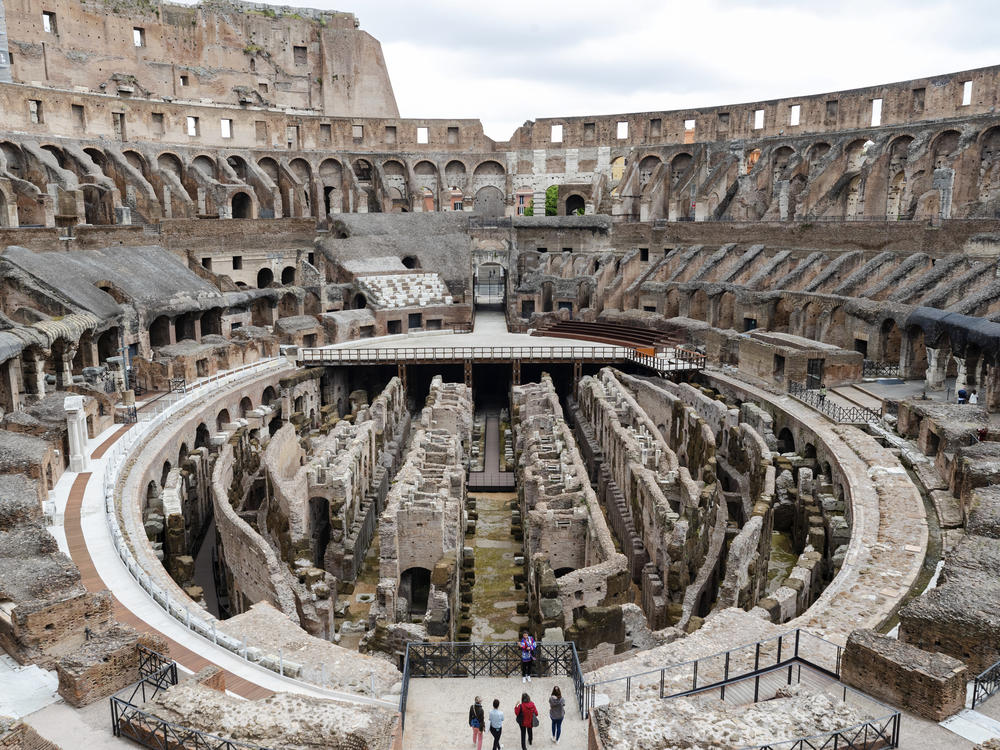Section Branding
Header Content
Roman Colosseum's New Floor Will Give Visitors A Gladiator's Point Of View
Primary Content
The Roman Colosseum is one step closer to having a floor, which will let visitors see the ancient amphitheater from a gladiator's vantage point for the first time in two centuries.
The famed Italian landmark dates back to the Flavian dynasty of the first century, and was originally used to host spectacles like animal hunts and gladiatorial games. It's been without a complete floor since the nineteenth century, when archaeologists removed it to reveal the network of structures and tunnels underneath.
An effort to change that is well underway. The Italian government began seeking proposals from engineers for a new floor last December, and announced on Sunday that it had awarded the 18.5 million euro ($22.2 million) contract to a Milan-based firm called Ingegneria.
The high-tech floor will be "light, reversible and sustainable," according to a press release. It is expected to be completed by 2023.
"You will be able to walk on it and go to the center of the Colosseum, seeing it in the same way as visitors used to up to the end of the nineteenth century," said Culture Minister Dario Franceschini, according to Reuters.
The top of the floor will be made of sustainable Accoya wood, the release said, and will consist of slats that can be rotated to allow natural light into the area below and shield the underground structures from rain.
A mechanical ventilation system will control the temperature and humidity of the below-ground structures, while a rainwater collection and recovery apparatus will reduce the water load and divert it to the monument's public bathrooms.
The installation of the 3,000 square meter (32,300 square foot) floor will be completely reversible, the ministry said, offering flexibility for the future.
Officials stressed on Sunday that the flooring project aims to restore the original image of the Colosseum while also conserving the archaeological structures underneath.
"The complex underground system under the wooden pavement, thanks to hatches, hoists and mobile types of machinery, allowed men, beasts and props to be brought up to the arena floor," said Alfonsina Russo, the Colosseum director, according to CNN.
The Colosseum has served a variety of purposes over the centuries, as its website notes: It has at times been a quarry for building materials, a shelter for animals and an archaeological excavation site.
It's now a "monument to works of art and human ingenuity" that occasionally hosts temporary exhibits and other events. And it's among Italy's most famous tourist attractions, drawing some 7.6 million visitors in 2019.
After closing its doors for stretches of the pandemic, the Colosseum reopened to the public at limited capacity last week.
Copyright 2021 NPR. To see more, visit https://www.npr.org.

